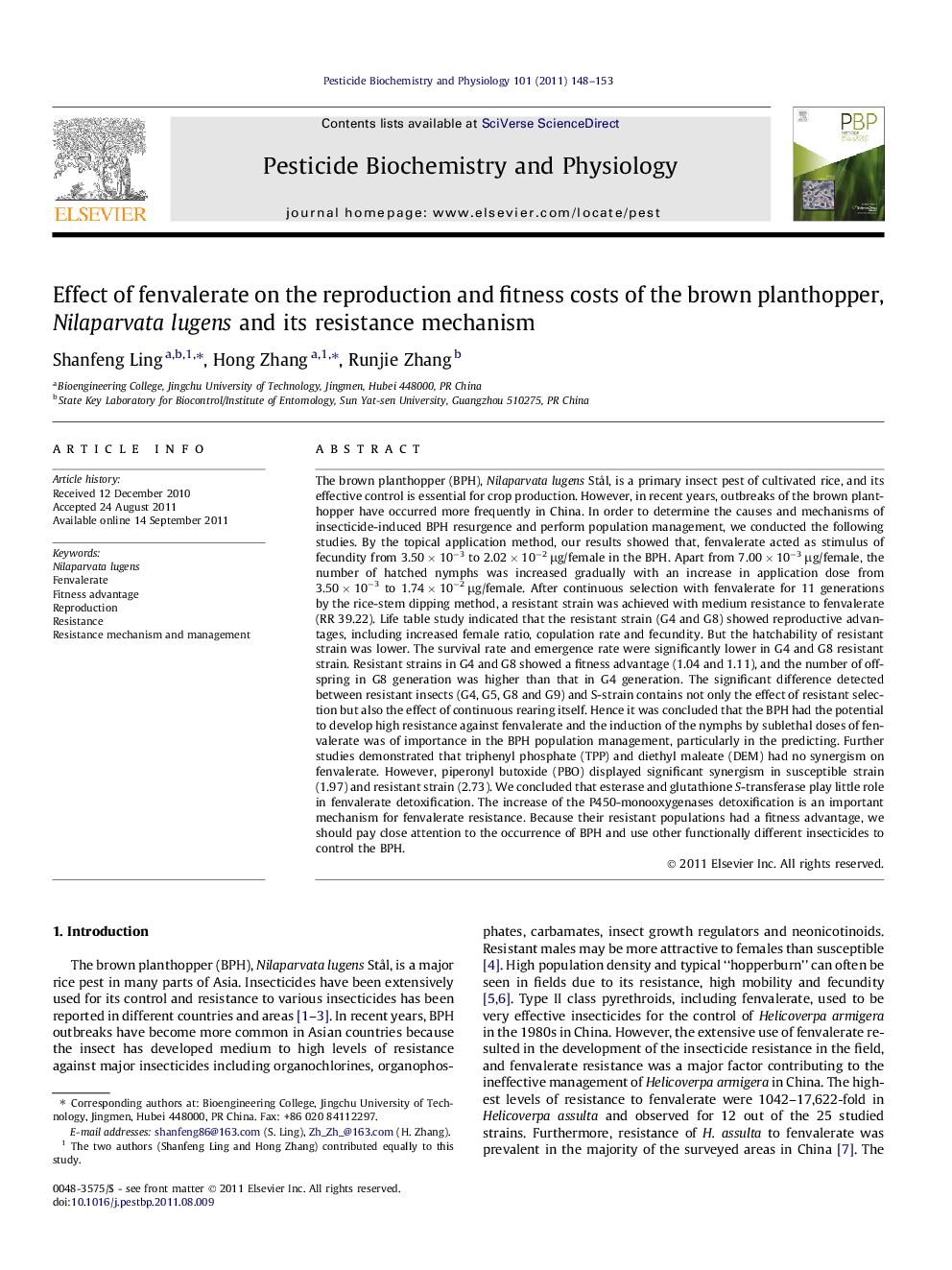| کد مقاله | کد نشریه | سال انتشار | مقاله انگلیسی | نسخه تمام متن |
|---|---|---|---|---|
| 2009816 | 1066689 | 2011 | 6 صفحه PDF | دانلود رایگان |

The brown planthopper (BPH), Nilaparvata lugens Stål, is a primary insect pest of cultivated rice, and its effective control is essential for crop production. However, in recent years, outbreaks of the brown planthopper have occurred more frequently in China. In order to determine the causes and mechanisms of insecticide-induced BPH resurgence and perform population management, we conducted the following studies. By the topical application method, our results showed that, fenvalerate acted as stimulus of fecundity from 3.50 × 10−3 to 2.02 × 10−2 μg/female in the BPH. Apart from 7.00 × 10−3 μg/female, the number of hatched nymphs was increased gradually with an increase in application dose from 3.50 × 10−3 to 1.74 × 10−2 μg/female. After continuous selection with fenvalerate for 11 generations by the rice-stem dipping method, a resistant strain was achieved with medium resistance to fenvalerate (RR 39.22). Life table study indicated that the resistant strain (G4 and G8) showed reproductive advantages, including increased female ratio, copulation rate and fecundity. But the hatchability of resistant strain was lower. The survival rate and emergence rate were significantly lower in G4 and G8 resistant strain. Resistant strains in G4 and G8 showed a fitness advantage (1.04 and 1.11), and the number of offspring in G8 generation was higher than that in G4 generation. The significant difference detected between resistant insects (G4, G5, G8 and G9) and S-strain contains not only the effect of resistant selection but also the effect of continuous rearing itself. Hence it was concluded that the BPH had the potential to develop high resistance against fenvalerate and the induction of the nymphs by sublethal doses of fenvalerate was of importance in the BPH population management, particularly in the predicting. Further studies demonstrated that triphenyl phosphate (TPP) and diethyl maleate (DEM) had no synergism on fenvalerate. However, piperonyl butoxide (PBO) displayed significant synergism in susceptible strain (1.97) and resistant strain (2.73). We concluded that esterase and glutathione S-transferase play little role in fenvalerate detoxification. The increase of the P450-monooxygenases detoxification is an important mechanism for fenvalerate resistance. Because their resistant populations had a fitness advantage, we should pay close attention to the occurrence of BPH and use other functionally different insecticides to control the BPH.
After continuous selection with fenvalerate for 11 generations by the rice-stem dipping method, a resistant strain was achieved with medium resistance to fenvalerate (RR 39.22).Figure optionsDownload as PowerPoint slideHighlights
► Fenvalerate acted as stimulus of fecundity from 3.50 × 10−3 to 2.02 × 10−2 μg/female.
► Resistant strains (G4 and G8) showed reproductive advantages and a fitness advantage.
► The BPH had the potential to develop high resistance against fenvalerate.
► The induction of the nymphs by sublethal doses of fenvalerate was of importance.
► The P450-monooxygenases detoxification is an important resistance mechanism.
Journal: Pesticide Biochemistry and Physiology - Volume 101, Issue 3, November 2011, Pages 148–153